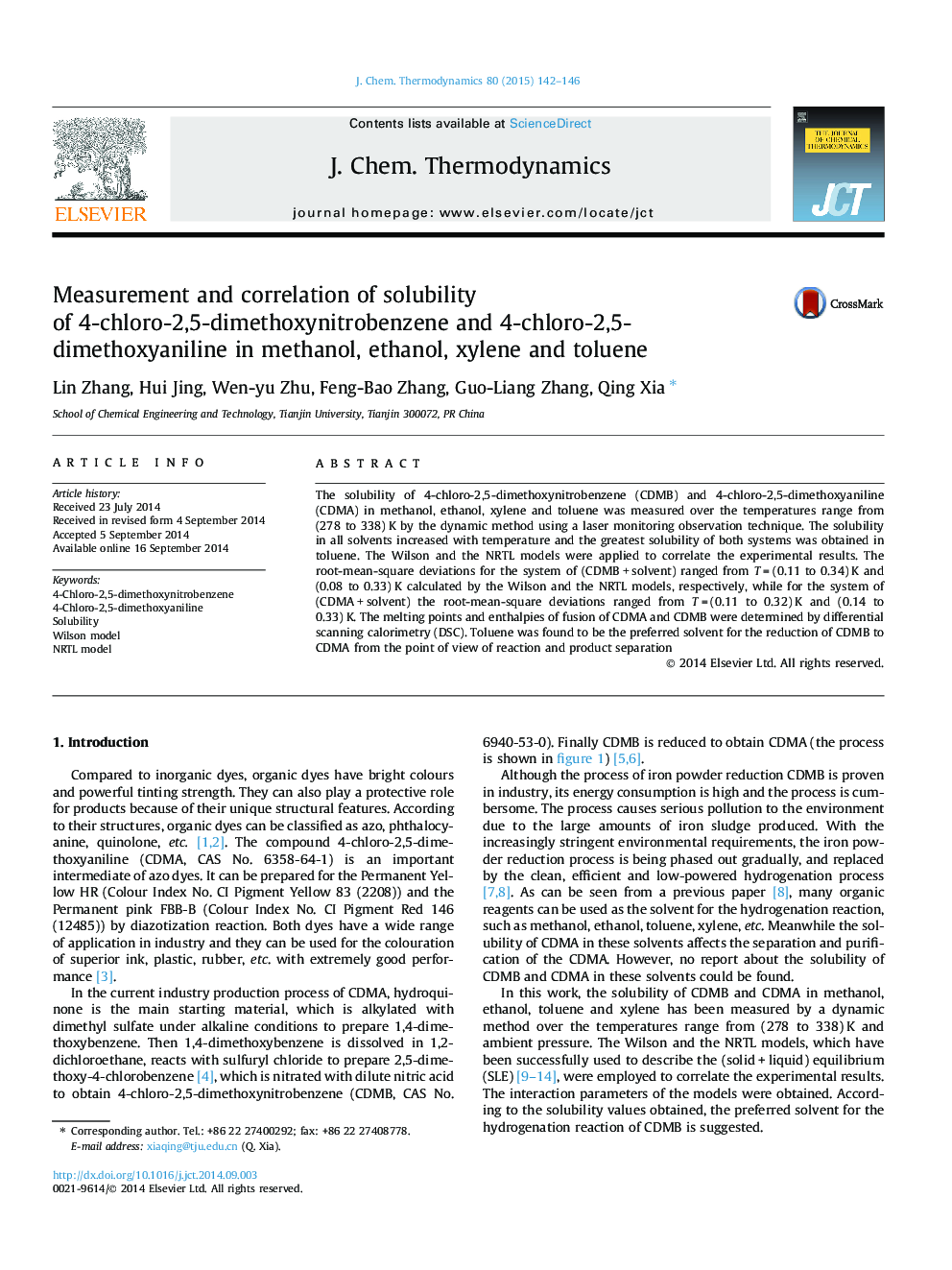| Article ID | Journal | Published Year | Pages | File Type |
|---|---|---|---|---|
| 215281 | The Journal of Chemical Thermodynamics | 2015 | 5 Pages |
•Solubility of 4-chloro-2,5-dimethoxynitrobenzene in four solvents were measured.•Solubility of 4-chloro-2,5-dimethoxyphenylamine in four solvents were measured.•The experimental data were correlated with the Wilson model and the NRTL model.•A suitable solvent for reduction of 4-chloro-2,5-dimethoxynitrobenzene was suggested.
The solubility of 4-chloro-2,5-dimethoxynitrobenzene (CDMB) and 4-chloro-2,5-dimethoxyaniline (CDMA) in methanol, ethanol, xylene and toluene was measured over the temperatures range from (278 to 338) K by the dynamic method using a laser monitoring observation technique. The solubility in all solvents increased with temperature and the greatest solubility of both systems was obtained in toluene. The Wilson and the NRTL models were applied to correlate the experimental results. The root-mean-square deviations for the system of (CDMB + solvent) ranged from T = (0.11 to 0.34) K and (0.08 to 0.33) K calculated by the Wilson and the NRTL models, respectively, while for the system of (CDMA + solvent) the root-mean-square deviations ranged from T = (0.11 to 0.32) K and (0.14 to 0.33) K. The melting points and enthalpies of fusion of CDMA and CDMB were determined by differential scanning calorimetry (DSC). Toluene was found to be the preferred solvent for the reduction of CDMB to CDMA from the point of view of reaction and product separation
